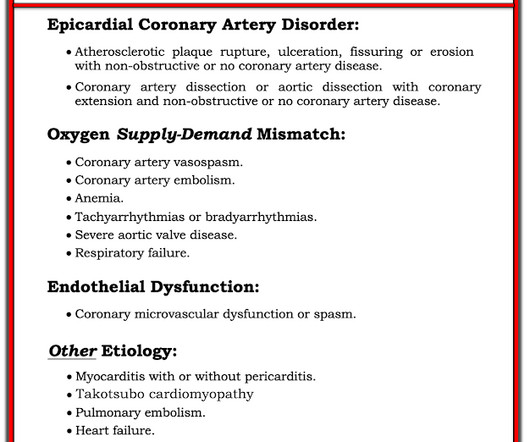What does the angiogram show? The Echo? The CT coronary angiogram? How do you explain this?
Dr. Smith's ECG Blog
NOVEMBER 15, 2023
A 70-something female with no previous cardiac history presented with acute chest pain. She awoke from sleep last night around 4:45 AM (3 hours prior to arrival) with pain that originated in her mid back. She stated the pain was achy/crampy. Over the course of the next hour, this pain turned into a pressure in her chest. She said this was midsternal and felt like a tightness.















Let's personalize your content